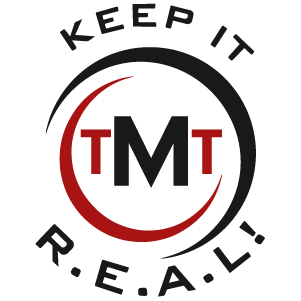
I got an e-mail from a client who was disappointed because he was mailing 40-50 direct mail letters a week to new prospects (cold list) and “only” getting an average of 6 responses from each batch he sent out. Well jumpin’ Jehosaphat, Batman! But worse yet is that he wants a different letter because the people responding aren’t the type of client he wants. That’s like having a party, inviting people and then getting mad because you don’t like the people who showed up. You invited them! This story serves as the basis for five important lessons in marketing and business economics that seem to require frequent repetition:
1. Stop worrying over response percentages. In this case, the response percentage was INSANELY good. It’s EXTREMELY rare that anyone can mail out to a cold list like this and get a 10% response. More common is .5% to maybe 2%. But all of that is irrelevant in the final decision of whether or not a direct marketing campaign is successful because you CAN’T TAKE RESPONSE PERCENTAGES TO THE BANK. Response percentages do play a role in measuring effectiveness of one offer over another, the quality of a list, etc. But you can have a high response percentage and still not have a positive ROI, where you can have an extremely LOW response percentage and get a positive ROI. Bottom line, judging any campaign solely on how many people respond is foolish. And while I’m on the subject, I’ll also mention that open rates is also a stupid way to see if a campaign was successful. First off, they’re not entirely accurate for a number of reasons; and again, how many SALES you ultimately generate is all that truly matters.
2. Acquiring customers from a cold list is the SINGLE MOST EXPENSIVE MARKETING ACTIVITY you can do. That’s not to say you shouldn’t do it; however, it should only be introduced as part of your marketing AFTER you’ve exhausted all other means, namely referral campaigns and referral events, endorsed mailings (as you saw demonstrated earlier), JVs, reactivating old clients, attempts to revive unconverted leads, public speaking and other targeted direct marketing efforts to very select, targeted lists (affinity marketing to small, highly targeted groups for example).
3. Acquiring customers is not FREE. This should be obvious, but most are highly irrational and emotional about what they spend on marketing. The average cost to acquire a customer is $2,000 to $3,000. If you stubbornly refuse to invest money into building systems, people and other marketing assets (like a good web site) then you will fail to get sufficient deal flow coming in. Now you CAN make up for a lack of budget with sheer force and with excellent sales skills, but you WILL need to make up in numbers for what you lack in skill. When I first started my business, I invested heavily into studying sales and marketing strategies, JVs and web marketing since I had to rely completely on my wit and skills.
4. Forget PRE-SET budgets for marketing. A question I often get is “What should I budget for marketing?” That’s inherently a poor question because it’s the wrong question to ask. A better one is “What do I need to spend in order to acquire an ideal client?” Once you know that, you roll that into your costs just like you would your RMM licenses, tech salaries, etc. Calculating your marketing spend based on a percentage of gross sales is ridiculously limiting. What if you have a marketing system that produces $1,000 for every $200 you invest; would you put a cap on that? And is there any sense in spending 10% of all revenue coming in (or any percentage for that matter) if the marketing isn’t paying off? Not if you have a brain and can do math. That’s why a percentage of revenue marketing budget doesn’t make sense. And in fact, the MORE you can spend on getting a client, the easier it will be for you. Most don’t consider that as a strategic, competitive advantage, but it is. Why do you think ProActive, the acne treatment, sells MILLIONS and is a well-known brand over the dozens of other acne treatments on store shelves? Because they understand marketing metrics and can go negative in acquiring a customer, giving them the ability to hire celebrities to endorse their products, produce long-running infomercials, and use direct mail and other sophisticated marketing methods that their competitors simply cannot use due to their inability to monetize them…which brings me to the fifth and final point…
5. You MUST have a way to fully monetize every client and opportunity you have with subscription income, upsells, cross selling and through referral stimulation. Having this gives you exponentially more revenue and profit per customer, allowing you to spend MORE to get them in the first place. I realize these are sophisticated topics that most simply will not embrace due to all sorts of negative EMOTIONS regarding money; but if you are truly wanting to captain your company to greater levels of sales, profits and growth, not understanding these key metrics and refusing to invest in developing marketing assets and systems will stall every effort and attempt you make for growth, if not shut it down completely.


